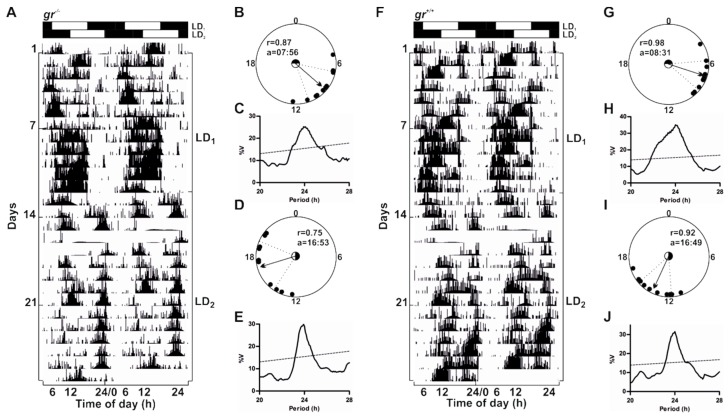Figure 5.
Daily activity rhythms of gr+/+ and gr−/− adult zebrafish. Representative actograms (A,F), circular diagrams (B,D,G,I) and χ2 periodogram analysis (C,E,H,J) of adult zebrafish gr+/+ and gr−/− subjected to 12:12 LD cycles. In actograms the height of each point represents the number of infrared light-beam interruptions in 10 min. Starting and ending day of each LD cycle (LD1 and LD2) is shown on the right of the actogram. The number of days is indicated on the left and the time of day is plotted on the bottom of each actogram. For more details, see Figure 2. Circular diagrams showing acrophases for the last 10 days of each LD period are plotted (B,D,G,I). Each black dot shows the daily acrophase, while arrows indicate the average acrophase represented as a vector. In each circle the mean vector length (r) and mean acrophase (a) are shown (B and D for gr−/−; G and I for gr+/+, for LD1 and LD2, respectively). The circle inside each circular diagram represents critical values of the Rayleigh test (p < 0.05) and the black part of the circle shows the duration of dark phase. The dotted lines represent the confidence intervals. Activity records in the last 10 days of each LD cycle were also subjected to χ2 periodogram analysis (C and E for gr−/−, H and J for gr+/+). Confidence limits were chosen at the 99% level.

